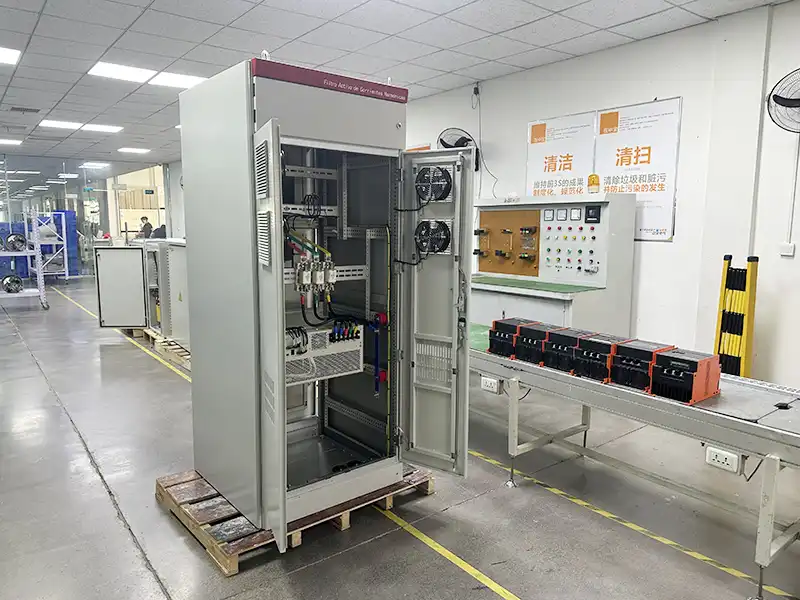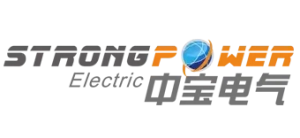Active power filters hold significant potential for widespread application in industrial, commercial, and institutional power distribution systems, offering effective solutions for enhancing power quality and ensuring electrical safety. These devices demonstrate particular value in key scenarios including: power transmission networks, electrolytic/electroplating facilities, municipal water treatment plants, petrochemical operations, large-scale commercial centers, precision electronics manufacturing environments, transportation infrastructure power systems, and critical medical facilities. Across these diverse applications, the technology delivers measurable benefits by boosting power supply stability, mitigating harmonic distortions, optimizing production process accuracy, while simultaneously extending equipment service life and minimizing operational failures.
Communications Industry
The communications industry is experiencing a substantial increase in UPS equipment capacity as data centers continue to expand in scale. Research indicates that the primary harmonic sources in telecom low-voltage distribution systems—including UPS units, switching-mode power supplies, and variable-frequency air conditioning systems—not only generate significant harmonic distortion but also exhibit exceptionally high displacement power factors. By deploying active power filters, operators can enhance both communication system stability and grid reliability, prolong critical equipment lifespan, and ensure compliance with stringent harmonic mitigation standards.
Petrochemical Industry
The petrochemical manufacturing sector faces growing harmonic pollution challenges in power distribution systems due to the widespread adoption of variable frequency drives (VFDs) for pump operations. Most conventional VFDs utilize 6-pulse rectification technology, generating characteristic 5th, 7th, and 11th order harmonics during operation. These harmonics induce multiple operational risks including abnormal equipment heating, premature insulation degradation, and significant power measurement inaccuracies. Implementing active power filter (APF) solutions effectively mitigates harmonic distortion, ensuring reliable and stable operation of critical power infrastructure in petrochemical facilities.
Chemical fiber industry
The chemical fiber manufacturing industry extensively employs electric melting heating systems due to their superior process advantages. This technology directly channels electrical energy into glass tank furnaces via electrodes, delivering enhanced melting efficiency, improved glass quality, extended furnace lifespan, and reduced energy consumption. However, these systems generate complex high-order harmonics during operation, characterized by three-phase spectral distribution disparities and wide amplitude fluctuations, significantly compromising grid power quality.

Steel Industry
In the steel and medium-frequency heating industries, the operation of key equipment such as medium-frequency furnaces, rolling mills, and arc furnaces often leads to severe power quality issues. These nonlinear loads not only frequently trigger overload protection in capacitor compensation cabinets but also cause abnormal heating in transformers and power lines, along with unexpected fuse failures. In extreme cases, they may even result in voltage sags and flicker, significantly disrupting the stable operation of production systems.
Automotive Manufacturing
In the automotive manufacturing industry, welding equipment serves as a critical process asset. However, its stochastic, instantaneous, and high-impact operation poses significant challenges to power distribution systems. When multiple welding machines operate simultaneously, they induce severe power quality issues, including:
- Inconsistent weld quality due to voltage fluctuations,
- Unplanned stoppages of high-precision industrial robots caused by voltage disturbances, and
- Malfunctions in reactive power compensation systems, all of which compromise production line automation and process stability.
DC motor harmonic control
In facilities operating large DC motors, rectifiers are typically required to convert AC power to DC power. Due to the substantial load capacity of such installations, significant harmonic pollution often occurs on the AC side, leading to voltage waveform distortion. In severe cases, this may even cause major operational failures or accidents.
Automated production
In automated production lines and precision equipment environments, harmonic interference can disrupt critical systems—such as intelligent controllers and PLCs—compromising production stability and operational accuracy.
Hospital System
The power supply systems in medical institutions must adhere to stringent standards for continuity and reliability:
- Class 0 areas require power restoration within T ≤ 15 seconds.
- Class 1 areas must resume power within 0.5 seconds ≤ T ≤ 15 seconds.
- Class 2 areas necessitate power supply switching in T ≤ 0.5 seconds.
Additionally, the system’s total harmonic distortion rate (THDu) must be maintained below 3%. Notably, medical imaging equipment such as X-ray machines, CT scanners, and MRI systems are typical high-harmonic loads.
Large shopping malls
The thyristor dimming systems and large LED displays commonly used in theaters and stadiums are significant sources of high-order harmonics, particularly third harmonics, during operation. These harmonics not only reduce the energy efficiency of power distribution systems but can also lead to light flickering and interfere with low-voltage circuits, such as communication systems and cable TV networks, causing signal noise and even equipment malfunctions.



